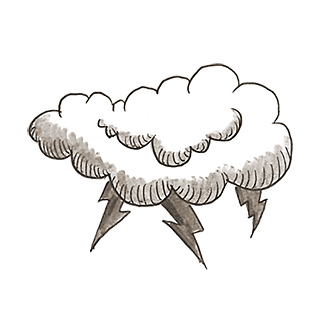
Related Questions
- What’s the difference between AC and DC?
- What is a short circuit?
- Is it possible to collect energy from a moving roller coaster?
- What happens to electricity when nothing is plugged into an outlet?
- Is it possible to construct a perpetual motion machine?
- Why can’t fusion energy solve the global energy crisis?
- Can sound be converted to useful energy?
- Can we calculate the efficiency of a natural photosynthesis process?
- Can traditional gasoline-powered cars be converted to run on hydrogen fuel cells?
- Which is more likely to happen first: solar panels on every home, or giant solar power plants?
Is it possible to collect energy from foot traffic?
The force of feet hitting floors is one of several avenues being explored in the world of “energy scavenging”…
By Peter DunnScavenging energy isn’t new — think of water wheels, self-winding wristwatches, and pedal-powered bicycle lights. More recently, however, engineers have begun to take more seriously the capture of minuscule quantities of energy that would otherwise be dissipated. The biggest advances involve doing it on a tiny scale, and at very low cost, using micro-electromechanical systems (MEMS).
Typically just a few millimeters across, MEMS devices are produced with technology developed for making semiconductor chips, but incorporate mechanical features as well as electronic circuitry. Volume manufacturing has driven costs down, and MEMS are becoming ubiquitous, notes Associate Professor of Mechanical Engineering Sang-Gook Kim. “Inkjet printer nozzles are an example,” he says, “and automobiles use them for tire pressure and airbag sensors, and monitoring of engine air and fuel flow.”
These microscopic machines can harvest energy in a number of ways — floor impacts from foot traffic or vibrations from a motor can be converted into electricity by several methods, including piezoelectric materials, which give off a voltage when squeezed. Piezoelectric technology was used to create power-generating floor mats for an experiment at Tokyo’s main train station; passengers walking across the mats generated enough electricity to run lighting and other equipment at the station.
Another option is thermoelectric materials, which produce electricity in response to a temperature differential. They could scavenge energy from a warm appliance or engine or even the body. The ability of MEMS technology to generate power in nearly any environment has other applications as well, says Kim. “One possible application is leakage monitoring on long-distance pipelines, to prevent oil spills,” he says. “Our device could be integrated into millions of self-powered sensors along a pipeline to provide 24-hour monitoring, even in very cold and remote locations.”
One of many practical challenges: available energy is not always uniform. The foot hitting the floor can create vibrations of widely different directions, intensities, and frequencies. Kim’s group recently applied for patents on a MEMS device than harvests vibrations across a wide frequency range, using a nonlinear resonant beam design.
Posted: May 3, 2010